Strawberry variety Vima Zanta
Vima Zanta (Vima Zanta) is a mid-early non-repairable variety of garden strawberries (strawberries) for universal use. Bred by employees of the Dutch company "Vissers Aardbeiplanten B.V." Since 2006, the "novelty" began to undergo state variety trials in Russia, and in 2018 it was included in the State Register of Breeding Achievements of the Russian Federation. Approved for cultivation in the Central region of the country (Vladimir, Ivanovsk, Bryansk, Moscow, Kaluga, Smolensk, Ryazan, Tula regions).
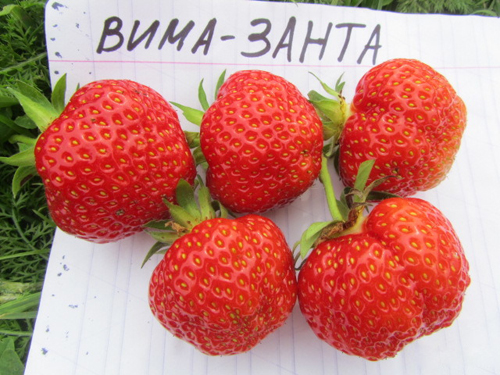
The plant is upright, vigorous, well leafy. Leaves are medium-sized, medium-wrinkled and medium-silvery, smooth, concave, boat-shaped, light yellow-green in color. The teeth of the leaf plate are sharp, narrow. The middle lobe of the leaf is oval with a sharp base. The petiole of the middle lobe of the leaf plate is longer than the lateral ones. The petiole is of medium length, slightly pubescent, the hairs are deflected. The flowers are medium-sized, untwisted, white in color, forming a semi-spreading inflorescence. Strawberries form bisexual flowers, so no additional pollination is required. Peduncles of medium length, rather thick, well pubescent, located below the level of the leaves, prone to lodging under the weight of the berries. Whiskers are abundant, whiskers are thin, green, slightly colored.
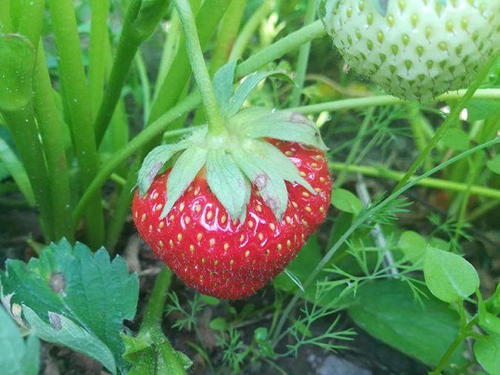
Wim Zant berries have a regular round shape without a neck. At the first harvest, it is the spherical ones that predominate, then the fruits acquire a wide-conical, slightly flattened shape, sometimes with a flattened neck. They are easily separated from the stalk, often even from the sepal - just reach out and the berry will immediately be in the palm of your hand. This feature, besides some others, makes the variety unsuitable for cultivation for the purpose of sale - after harvesting, the fruits are often deformed, damp, due to which they lose their presentation. The peel of strawberries has a bright orange-red color without a glossy sheen. Achenes are light yellow, pressed into the pulp to a medium depth. The pulp is light red, juicy, medium-dense, rather even loose, with a rather hollow core. This is another nuance due to which our heroine is unsuitable for commercial use - the transportability of the berries, as well as their keeping quality, is very low. Many gardeners say that it is difficult to bring the harvest intact even to the kitchen, and there can be no talk of transportation to the point of sale at all. On the other hand, transportation of strawberries is quite possible if specialized containers and refrigeration units are available.
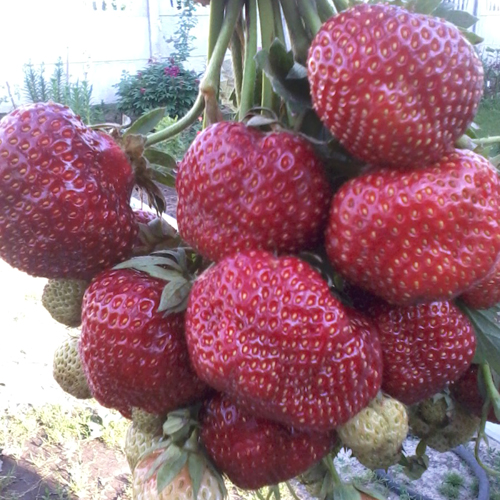
Wim Zant's taste is rich, very sweet and bright, sometimes even sugary, with a pronounced aroma, truly strawberry. Tasters rated the taste of fresh berries at 4.4 points on a five-point scale. The palate is complex, it plays with many different shades, there is also a slight sourness, subtly emphasizing the sweetness. According to reviews, the berries of this variety are tastier and sweeter than those of the famous Honey and Clery, and also more aromatic. Best of all, the fruits are suitable for fresh consumption, as well as for canning, making preserves and jams. They are not particularly suitable for storage in frozen form, since when defrosting they lose their shape and turn into a homogeneous mass.
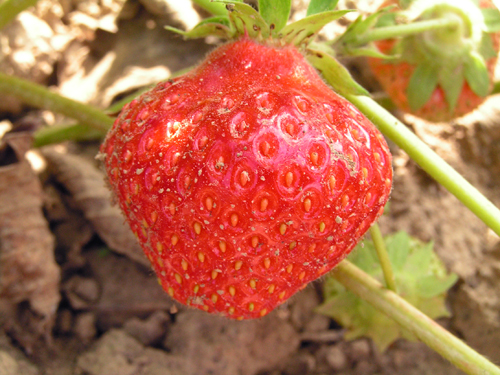
Strawberries of early or mid-early ripening, which in most cases depends on the weather conditions of the region, as well as the cultivation technique. Fruiting of Wim Zant begins around May-early June, a week later than early Honey... The yield is at a fairly high level - up to 80 kg / ha. According to the results of state tests, the average yield was 68 c / ha. From one plant, it turns out to collect about 600-800 grams of berries. Fruiting in our heroine is uneven, at the first harvest the fruits are much larger than in subsequent harvests.So, the first berries have an average weight of 30-40 grams, sometimes up to 50, then the weight gradually decreases to an average of 20-25 grams. This is not to say that the variety is distinguished by amicable ripening, such as Honey, while the collection has to be carried out more times. This is also another nuance of the variety that makes it unpromising for commercial cultivation.
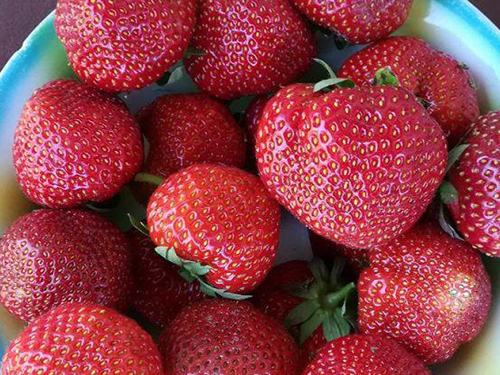
Vima Zanta is moderately resistant to heat, but it does not tolerate drought very well. Strawberries are moisture-loving, with abundant watering, they tie larger berries, while the number of fruits with a large cavity inside decreases. On the other hand, it is not worth overmoistening the soil - firstly, the risk of infection of plants with certain diseases increases, and secondly, the berries are often laid on the ground, and if you do not use mulch, they can begin to rot on wet soil, and they simply will dirty. By the way, the fruits are not baked in the sun, so more attention should be paid to their protection from high humidity. Strawberries are hardy, but in regions with little snowy winters, as well as sharp temperature changes, a good shelter is highly desirable. During state tests, the plants were slightly damaged by pests and diseases. According to some reports, it is especially rare for Vima Zanta to be affected by gray rot, verticillium wilting and fusarium. It is moderately susceptible to powdery mildew, but in unfavorable conditions it is prone to defeat by this disease.
As for the agricultural technology of cultivation, our heroine has several features. First of all, do not thicken the planting too much, the optimal planting scheme is 30-35 × 40-45 cm.With a denser planting, the yield of plants will significantly decrease. It is also extremely important to pay special attention to the timely removal of the mustache. As already mentioned, the variety forms a fairly large number of whiskers, and if you do not ration their number, then most of the nutrition will go to them, and you can not count on a good harvest. If you are growing strawberries for the purpose of reproduction or getting seedlings for sale, this feature will only benefit you. Another nuance of agricultural technology should be mentioned the exactingness of plants to soil fertility. Do not skimp on mineral fertilizing during flowering and fruit formation, thanks to them, the yield will increase significantly, and the berries will be much tastier.
Now is the time to summarize all of the above. Undoubtedly, Vima Zanta is a wonderful and noteworthy variety that combines two of the most important qualities - high yield and excellent berry taste. Many gardeners speak with admiration of our heroine, calling her one of the most delicious early varieties of strawberries. But it also has serious drawbacks, the main of which is unsuitability for transportation. In addition, the berries are often detached from the sepals during picking and do not look very neat. Thus, the variety is not particularly attractive for growing on an industrial scale for the purpose of selling fresh produce. The big drawbacks for commercial use are also abundant formation, which requires a lot of time and labor, and uneven ripening, which is why strawberry harvesting has to be carried out in a prolonged period. In a word, for cultivation on an industrial scale, it is definitely better to choose a different variety. But for growing on a personal plot, Vima Zanta is very good!









In 2019, we bought 10 bushes in the Verkhnyaya Pyshma nursery of Vima Zanta, the second year has passed not a single berry has been seen. All did and feeding and, accordingly, good watering. In what matters we cannot understand. And they write very beautifully! The bushes are powerful, but goofy.
The Vima Zanta variety is not a single berry for the second year, a powerful bush. Bought at the nursery.